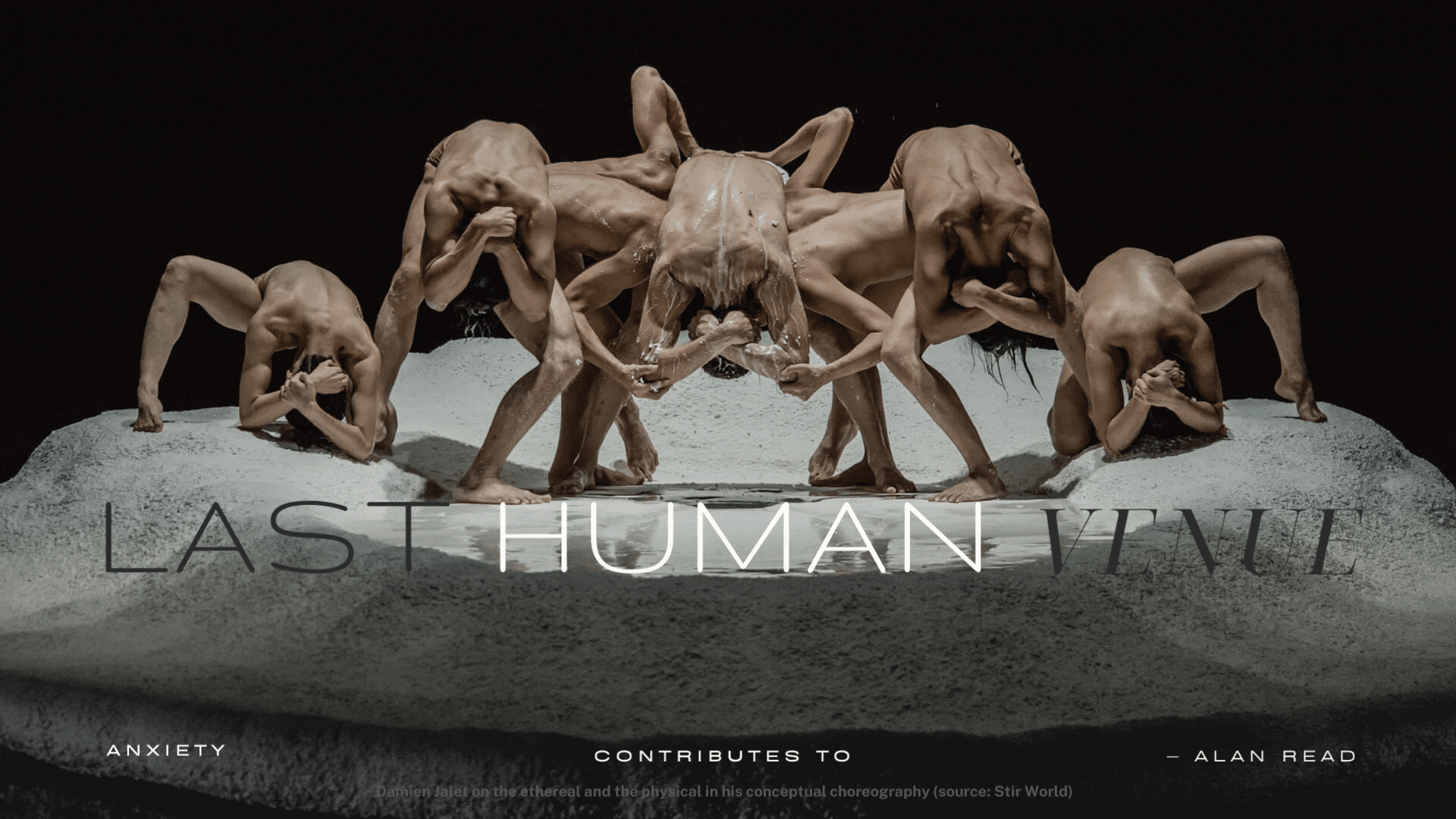
F i o n n . H a n
W r i t e r ╳ C o m p o s e r ╳ D e s i g n e r

Posthumanism
╳
Theatre. Performance
Navigating the Posthuman Landscape with case studies from 2013 to 2023
Essay brief
We need first to understand that the human form -- including human desire and all its external representations -- may be changing radically, and thus must be re-visioned.—Ihab Hassan,《Prometheus as Performer: Towards a Posthumanist Culture?》
Embark on an exploration of the resurgence of Posthumanism since the 1980s and its profound impact on our understanding of the (post)human body, particularly in the aftermath of the COVID-19 pandemic. Retracing its dialectical roots and exploring the cultural zeitgeist of the 20th century, we delve into intriguing questions surrounding Liveness, Identity, and Presence, interrogating traditional theater norms.
Journey through the evolution of contemporary performances from 2013 to 2023, where boundaries are pushed and new perspectives urge us to reconsider the possibilities of human form and the essence of humanity.
For those eager to dive deeper, the full article is available for download here.
For full reference of this video essay, please scroll down to the Bibliography section.

Breakdown
00:34 Navigating Posthumanism: What, How, and Why now
01:40 Posthumanism vs Humanism
05:04 Anxiety vs Immunity
05:51 The renaissance of posthumanism:
Donna Haraway (1984)
09:10 Disease as Metaphor:
Antonin Artaud’s The Theatre and The Plague (1933)
13:25 Anxiety toward Internet Theatre
Q1:Liveness
If 'onsite embodiment' is essential to be considered genuinely 'live'..
15:25 Does it matter whether the performers are humans?
15:56 OOO (Object Oriented Ontology)
16:36 Case study: Sayonara
17:26 Case study: I, Worker
21:09 Case study: The Oldest Boy
22:24 Posthumanism Theatre is Postdramatic Theatre as well.

Q2:Identity
If there’re non-human actors with non-existent identities..
23:32 Is it still a posthumanist theatre?
23:46 Case study: VOCALOID Aoi
26:33 Richard Seymour’s SIMULACRUM
Q3:Presence
If there’s no onsite presence but digital ones..
27:00 Can such performance help us better interpret this world?
27:12 Case study: To Be A Machine (Version 1.0)
28:08 Transhumanism ≠ Posthumanism
31:06 Case study: CyborgEros
35:13 Mediated Authenticity & New Agency
36:15 Performances with Posthumanist mindset


Case Studies
▪ Sayonara by Oriza Hirata (2013)
▪ I, Worker by Oriza Hirata (2013)
▪ The Oldest Boy by Sarah Ruhl (2014)
▪ VOCALOID Aoi by Hiroshi Tamawari (2014
▪ To Be A Machine [Version 1.0] by Dead Centre (2020)
▪ CyborgEros by Anarchy Dance Theatre (2023)
Bibliography
(selected)
1. Dunne-Howrie, Joseph. “Internet theatre and the historical consciousness of the COVID-19 ERA.” International Journal of Performance Arts and Digital Media, vol. 18, no. 1, 2021, pp. 176–190.
2. Hassan, Ihab. “Prometheus as Performer: Toward a Posthumanist Culture?” The Georgia Review, vol. 31, no. 4, 1977, pp. 843.
3. Hayles, N. K. (1999). Conclusion: What Does It Mean to Be Posthuman? In How we became posthuman: Virtual bodies in cybernetics, literature, and Informatics (pp. 283–291). essay, University of Chicago Press.
4. Keeling, Diane Marie, and Marguerite Nguyen Lehman. “Posthumanism.” Communication, 26 Apr. 2018, DOI.
5. Lavender, Andy. “Reflections upon the ‘post’ - Towards a Cultural Hitory and a Performance-Oriented Perspective.” The Routledge Companion To Theatre And Politics, edited by Peter Eckersall and Helena Grehan, Taylor & Francis, Abingdon and New York, Oxon and NY, 2019, pp. 9–12.
6. Lehmann, H.-T., & Juers-Munby, K. (2006, January 31). Postdramatic Theatre. Routledge & CRC Press.
7. Lucie, Sarah. “The human object in Oriza Hirata’s I, Worker and Sayonara.” The Routledge Companion To Theatre And Politics, edited by Peter Eckersall and Helena Grehan, Taylor & Francis, Abingdon and New York, Oxon and NY, 2019, pp. 212–214.

Full academic reference of this video essay (including all visual source) can be accessed here.
Artworks
(selected)
1.’Time Travel’ and ‘The Mountain’, by Rob Woodcox.
2. My Square Lady, by Gob Squad.
3. Abiogenesis, by Markos Kay.
4. Air head , by shy kids with Sora.
5. Vessel, by Damien Jalet & Kohei Nawa.
6. Colossus, by Stephanie Lake.
7. Ink, by Huang Yi.
8. Little Ant & Robot, by Huang Yi.
Audio
1.Good starts, by jingle punks.
2. Heartbender, by Savfk.
3. Odyssey, by Savfk.
4. Glósóli, by Sigur Ros.
5. Narration by Hua-Chun Fan.
